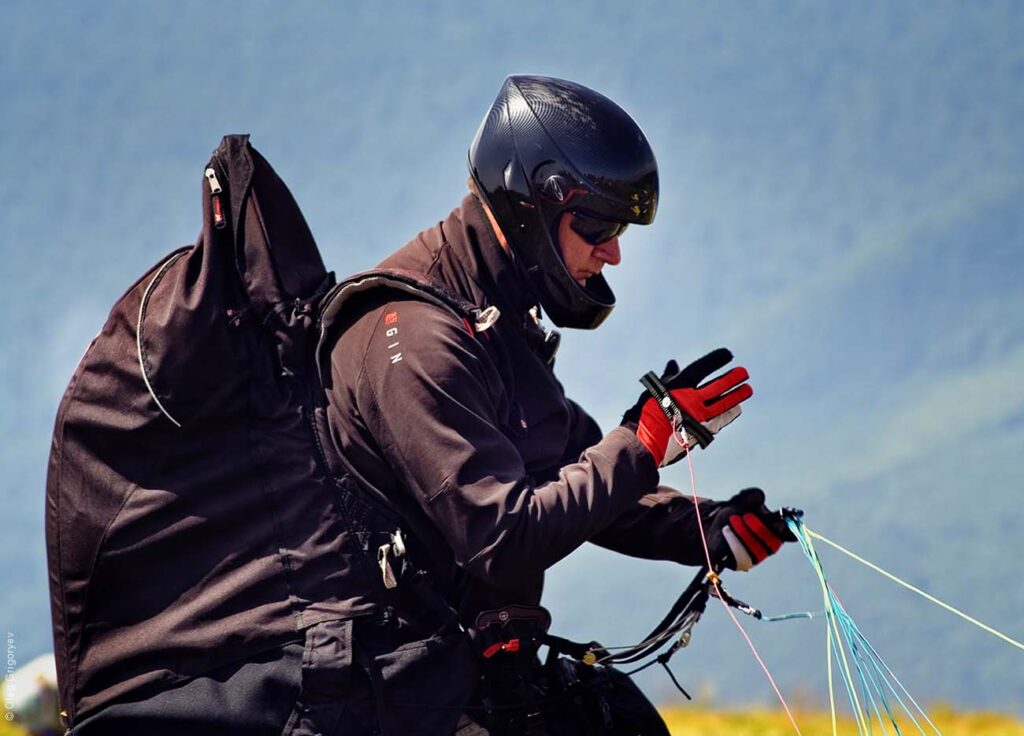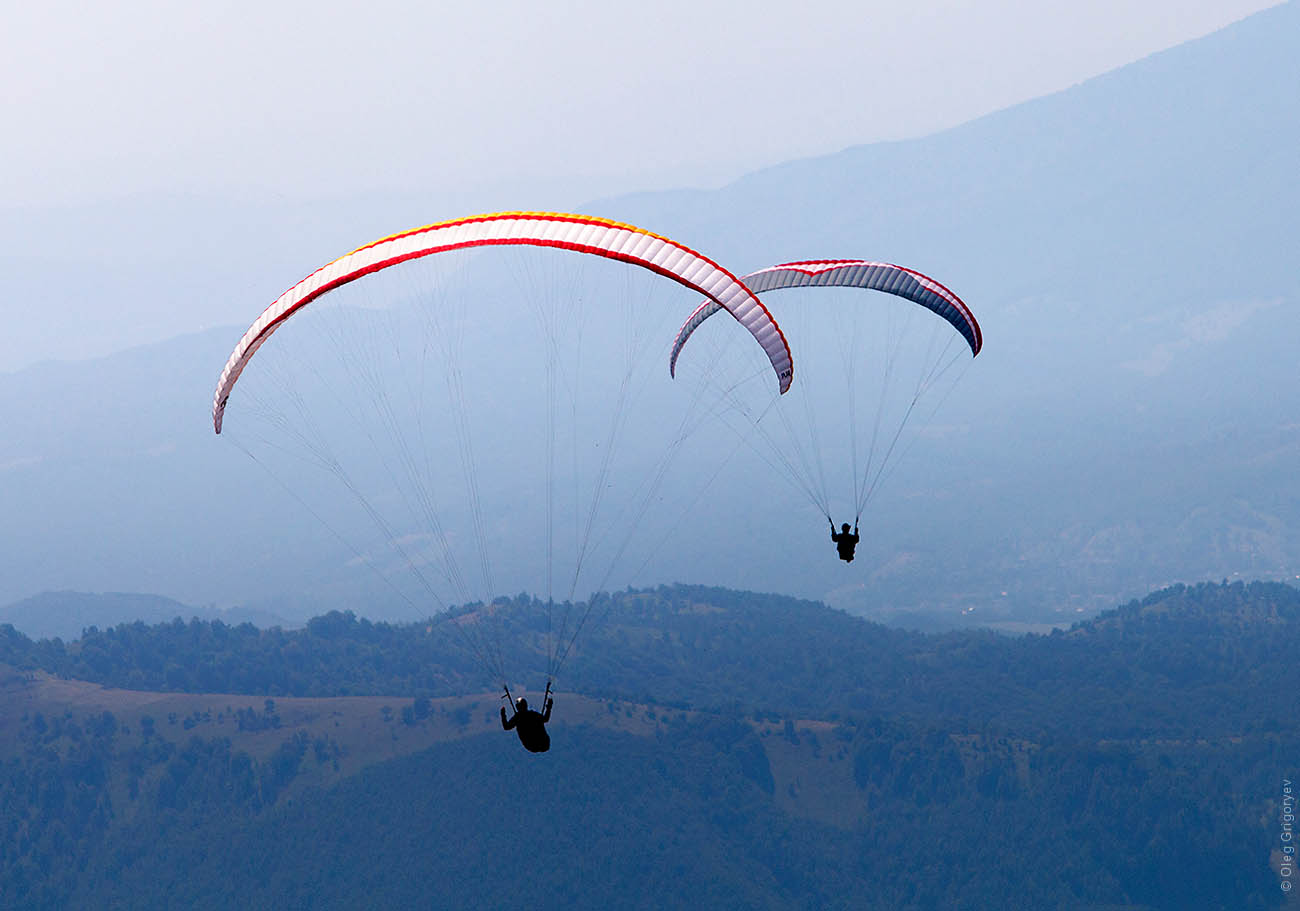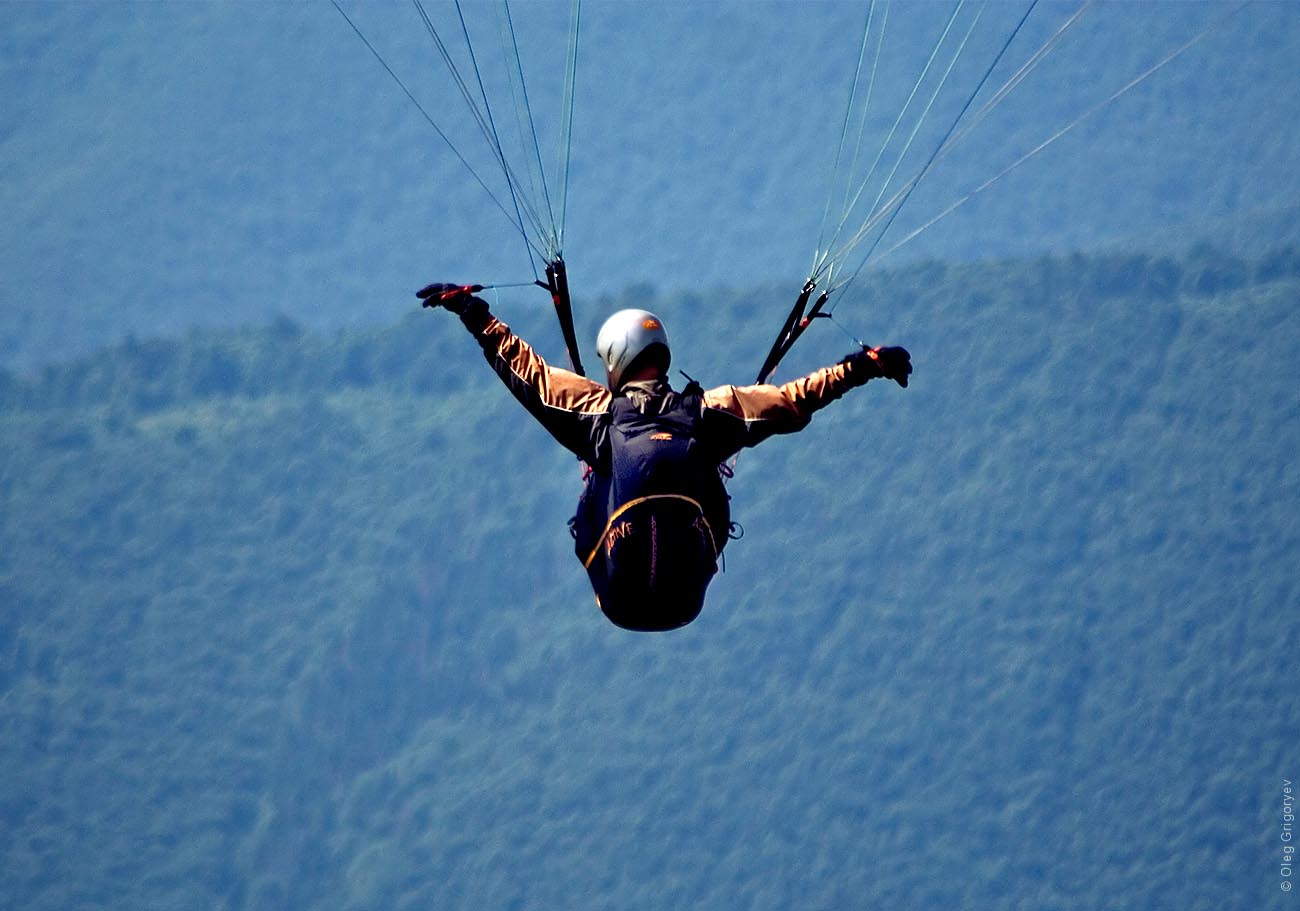
Have you ever dreamed of becoming a bird? Since the time of Leonardo da Vinci, people have dreamed of flying. Today, traveling by plane or helicopter will not surprise anyone, but everyone dreams of feeling the flight on their own wings.
Every year in Transcarpathia, the All-Ukrainian competition in paragliding is held – the Carpathian Cup. In Volovets district there are peaks of the Borzhavsky ridge, through which the flight route runs. The first competitions in these mountains were held in 2002.

Today, the Carpathian Cup is registered by the International Air Sports Federation (FAI) as a rating competition.
Successful performances at the Cup allow athletes to improve their rating and move to a higher level in their category. Competitions have Ukrainian and international open rankings.

80 pilots from different countries — Ukraine, Belarus, Russia, Romania, Poland, Spain, Hungary and Israel — compete for the Carpathian Cup. The competition program includes the following rankings: a flight along the given route for a minimum time interval, a race along the given route, a flight along the triangular route, a flight to an open distance in a straight line, a flight to a distance to a target, a flight to a distance to a target with return, accuracy of landing.


As a rule, paragliders are divided into professional athletes and weekend pilots. The latter are very cautious and fly only for their own pleasure. The scoring of competitors depends on the readings of electronic devices that accurately record the movement of the paraglider in the air. Each pilot has several GPS navigation devices.
What is good weather for a beginner, may be completely inappropriate for an experienced glider pilot. Before the start, all indicators must be checked, experienced pilots are able to calculate where the necessary thermal air flows – “thermals” pass (a thermal is when the sun heats up a land plot, and warm air rises from this land plot, diameter of such a thermal is about 25-40 meters), and where it is better not to fly into.


The paragliders started from Mount Gemba (1496 m), which offers a magnificent view of the Borzhavsky ridge, which is the longest polonine in Transcarpathia – almost 50 km. The slopes are streamlined, without sharp and edgy peaks, so you can land softly and painlessly anywhere.






The starting point has been chosen. The participants begin to prepare – the team helps to lay out the paraglider wing on the grass, while the pilot puts on the equipment, checks everything and takes position for the launch. Takeoff and landing are the most dangerous moments of a flight. At the command of the issuer, who gives the go-ahead for the start, the pilot lifts the canopy into the air. What a beautiful sight. In front of your eyes, a long flattened matter suddenly fills with air and rises up like a huge dome. Acceleration – and the paraglider has already been torn off the ground, and ahead are cascades of mountains.


The design of the paraglider is very interesting. At one time, the paraglider was created on the basis of a parachute, “paraglider” is an abbreviated phrase from two words “planning parachute”.
The paraglider itself is a wing consisting of an upper and lower surface made of airtight durable fabric, connected by jumpers – ribs, in the front part there are air intakes through which the wing is filled with air, the fabric is tightly sewn at the back and from sides.
The wing is connected to a suspension chair by a sling system. The thickness of the lines is less than parachute lines – 1.5 mm and they can withstand a load of 120-150 kg. Modern lightweight flight kits – canopy, outboard, spare tire, helmet, instrument – weigh about 7-8 kg and fit in a 40-50 liter backpack. But the classic options, together with all the equipment, will also pull 15-20 kg.


A similar design was invented by Steve Snyder in 1964 – earlier the device differed from a parachute only in shape. In the 70s of the last century, French skiers noticed such a device for themselves, who used it to speed up the descent from the mountain slopes.
The paraglider acquired its modern look only about 20 years ago – the canopy became two-layer, oval, the system of lines and suspensions has undergone many changes since then.
The wing of a paraglider creates lift by interacting with the ascending currents of warm air that rises from the ground, and it moves forward under the influence of gravity and the weight of the paraglider. If no attempt is made to maintain altitude, the paraglider will slowly descend to the ground.
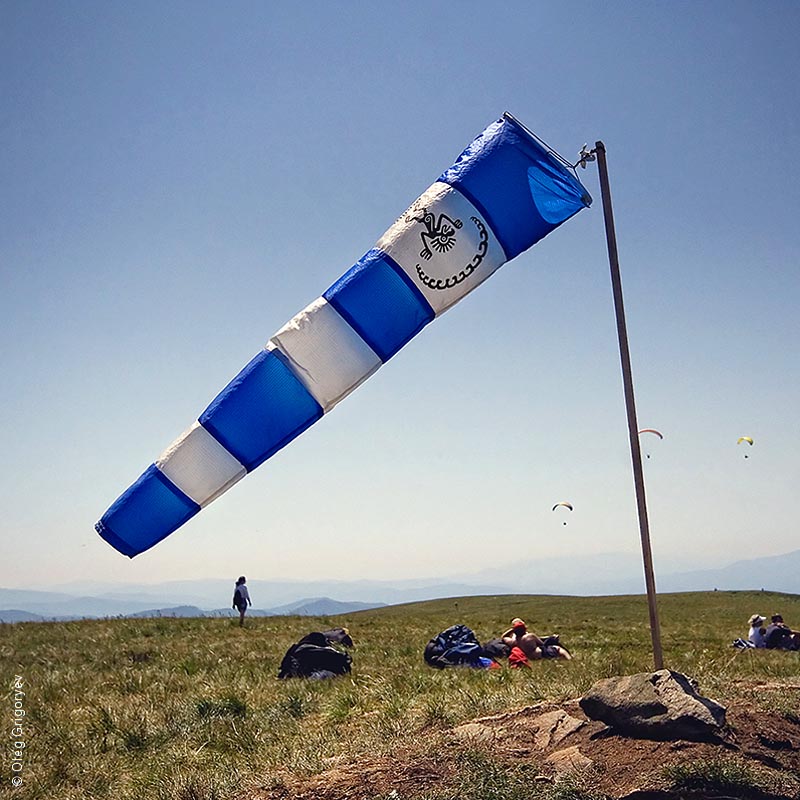

Fabric becomes rigid as it fills with air. For every meter of descent, a modern paraglider flies 7-11 meters forward. The speed in normal mode is 35-40 km / h, the minimum is about 25 km / h, and the maximum is up to 70 km / h for sports models. This device is controlled by the left and right toggles, which must be pulled down to turn. They can also speed up and slow down. But the most difficult thing is not control, but mental calculation – how and at what time you need to turn in order to be in the right place.



After flying for 200-300 hours, the fabric and lines lose almost half of their strength. Paragliding is considered not the cheapest sport. For example, a high-quality paraglider will set you back $1,800 and above. The price depends on many factors – the brand of the manufacturing company, the certificate (shows the safety level), the release date, quality of the materials, flight characteristics of the paraglider, and so on. Also, do not forget to buy equipment for the glider pilot – windproof overalls, helmet, boots, GPS device, gloves, goggles.

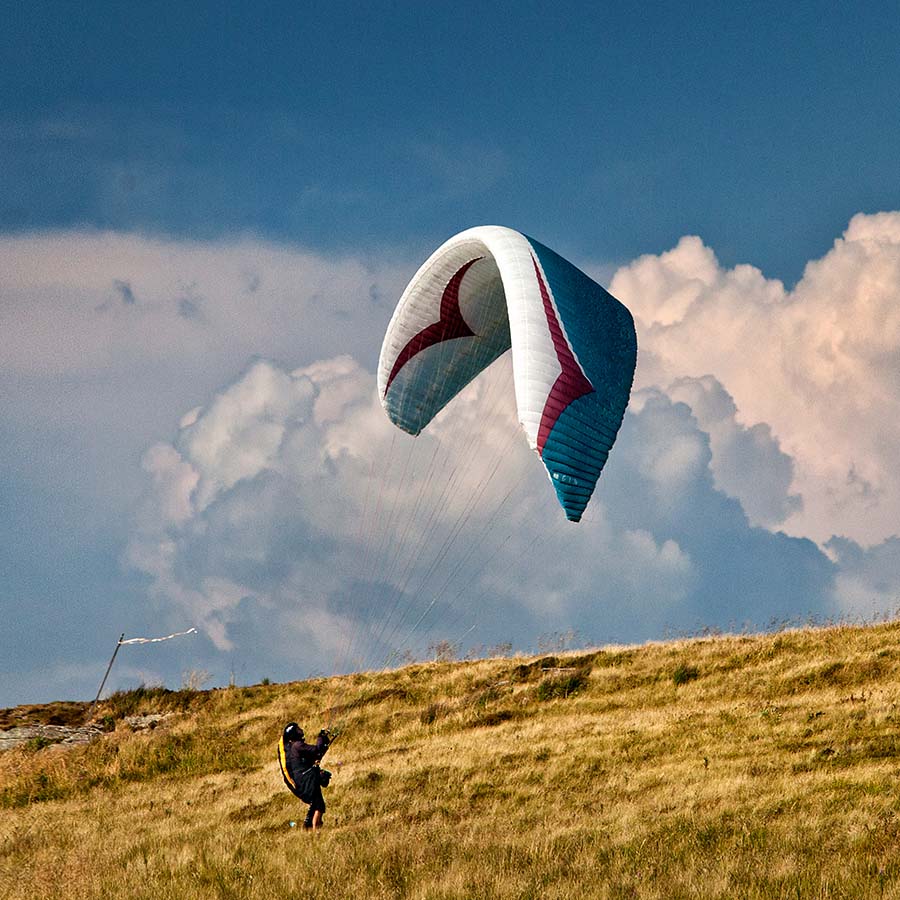
You can learn to fly paragliding pretty quickly. Some flying clubs promise to train and get you airborne in 3-5 days.
There are several types of competitions: route – to pass over the ground on a given course in the shortest possible time, rounding the turning points of the route, landing accuracy competitions, acrobatics or aerobatics – this is a discipline in which aerobatics are demonstrated.
Paragliders can be divided into three safety classes – Standard, Performance and Competition. The class of a paraglider is determined by the conformity of its testing results with certification systems.
The Standard is a paraglider for beginners, maximally safe, very stable and forgiving. In case of folding, it straightens out on its own, without the intervention of the pilot. Typically used for training purposes and recommended for pilots who fly purely for pleasure. Performance – has good flying qualities and is moderately stable. Competition is a paraglider for professionals.
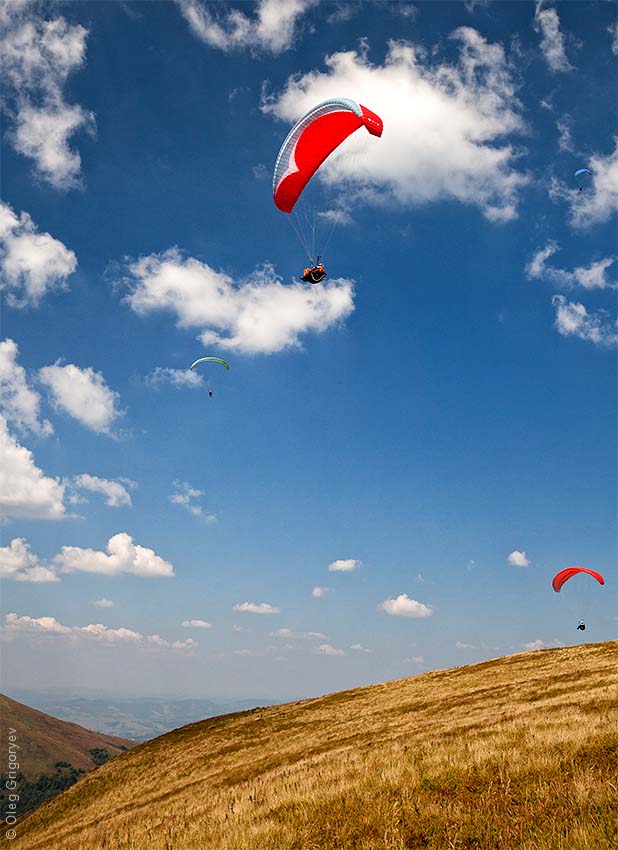

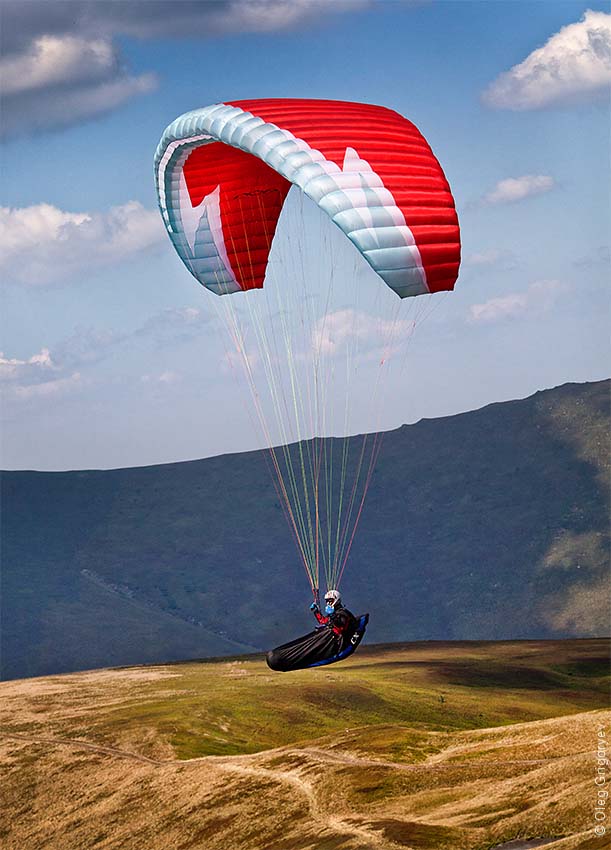
According to safety standards, the pilot needs no more than 4 seconds to unfold the paraglider after folding it in the air during turbulence. It seems a little, but in the air these seconds can be decisive. Pilots carry a reserve parachute just in case.
Pilots take off one by one, and in the sky above you, at the same time, dozens of multi-colored wings move smoothly and circle like high-mountain birds. It was incredibly interesting to photograph and watch the flights of aerial aces.


During the flight, the paraglider may accidentally collapse, completely or partially. This happens for various reasons, for example, from the effects of turbulence, pilot error, or other reasons. Depending on how the paraglider exits dangerous modes, a safety class is assigned.
It should not be forgotten that paragliding is a very extreme sport and quite often disasters happen to pilots. Unfortunately, these competitions were not without injuries – when approaching the mountain, two paragliders collided and fell down. Fortunately, there were no casualties, one of them got off with a fright and minor injuries, and the second had a broken leg and arm.

Paragliders do not fly in thunderstorms, it is very dangerous. Thunderclouds can “suck” what is in their path, namely a paraglider, and lift it up at a speed of 160 km / h. It is very difficult to control the device in strong turbulence, the structure may collapse, and the pilot at high altitude will experience extreme cold and lack of oxygen. Therefore, at first glance, harmless thunderclouds should be avoided.
Of course, it is fascinating to watch how professionals rise up . But it’s a completely different feeling when you try it for yourself. That was incredible!
Standing on the ground, I was confident in myself and even imagined the photos that I would take in the sky, angles and so on. But as soon as I was put on a tandem system and a helmet, fear enveloped me, my brain refused to think constructively. An inner voice whispered – yes, what is there? He yelled: “Don’t panic”, I hugged my backpack with my hands and got ready to start. The instructor gave clear instructions and explanations.


I heard how the wing canvas began to fill with air from behind and rise, feeling its strength. A little acceleration – and suddenly my legs let go of the ground. Along with the flow of oncoming air, I felt as if my entire body was covered by some kind of energy wave. I can’t believe it – I’m flying.
On the first flight, which took place at an altitude of 2600 m, I even forgot to put the tripod out of my backpack. Of course, I still wouldn’t have been able to use the tripod, but it looked solid and added weight to me.



Twice I was lifted into the sky, where I started to have a wild panic, my heart was pounding like a titanium hammer, my hair took the form of a mohawk, but I still continued to press the shutter of the camera. By the way, as it turned out, traditional methods of self-soothing – deep breathing and meditation – do not work in the sky.
You can hear whistling of the wind in the lines, and the view opens up for tens of kilometers. Nice and quiet. Now I understand why people, having tried flying once, rarely stop there. It was in a paraglider that a person’s desire to feel free flight was fully embodied.

When it was time to approach for landing, I felt that, despite the panic at the beginning, I wanted the flight to continue. Landing, fortunately, was soft. But after feeling weightless in the sky, it was even unusual to move on the ground, as if you felt the heaviness of your body, your legs. Would I dare to take another flight? Undoubtedly!


